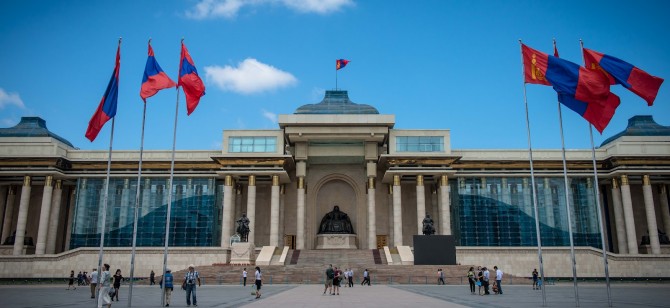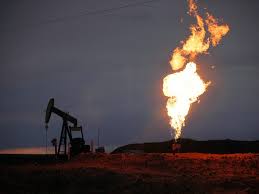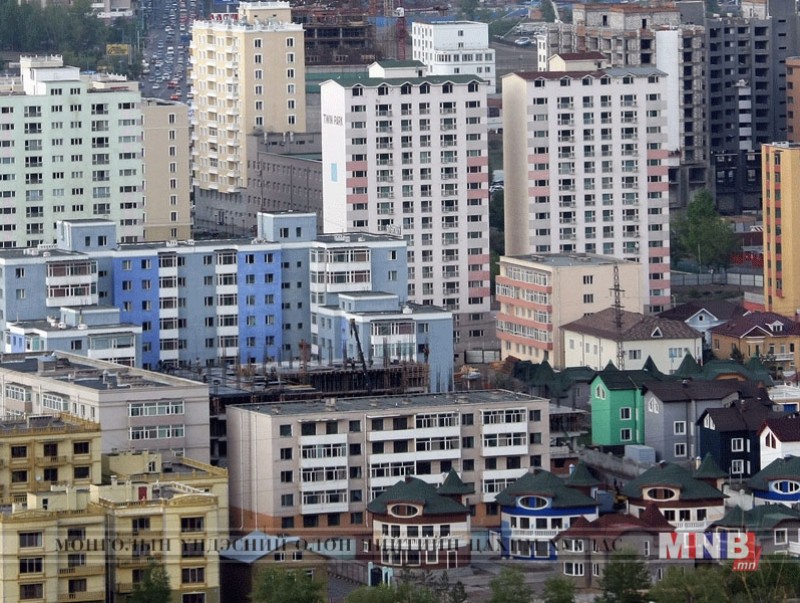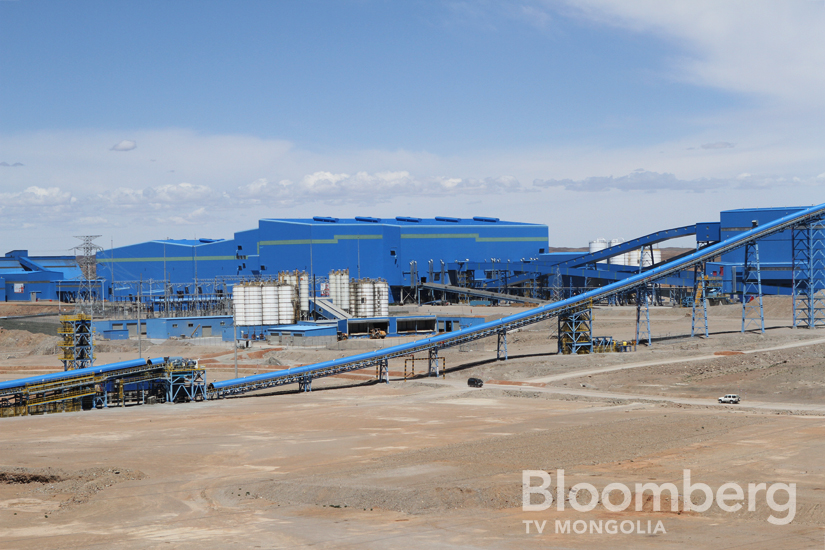Events
| Name | organizer | Where |
|---|---|---|
| MBCC “Doing Business with Mongolia seminar and Christmas Receptiom” Dec 10. 2025 London UK | MBCCI | London UK Goodman LLC |
NEWS

600 Hectares Rehabilitated from Mining Damage in Selenge Aimag www.montsame.mn
A 600-hectare area of degraded land in the Tsagaan Zuriin River area, located in Khuder soum, Selenge aimag, has undergone successful ecological rehabilitation, reversing years of damage caused by irresponsible mining practices. The scale of restoration is equivalent to planting 12 million trees, marking a major milestone in ecological recovery. The revitalized land has been formally transferred to the Selenge Aimag Department of Environmental Protection for ongoing stewardship.
The rehabilitation initiative was financed by Oyu Tolgoi LLC in alignment with the policy framework of the Ministry of Environment and Climate Change, and executed by local contractors in Selenge aimag. Jinjii Mining Company restored 400 hectares, while Bugant Nandin Company rehabilitated 200 hectares – both returning the natural soil to its original state. According to Oyu Tolgoi, this represents a significant step toward the broader effort to restore the Tsagaan Zuriin River ecosystem.
Before this initiative, Oyu Tolgoi LLC had already restored 400 hectares in the Yalba Valley of Yeroo soum, Selenge aimag, and 215 hectares in Sharyn Gol soum, Darkhan-Uul aimag. These efforts are part of the company’s “100 Million Trees for the Future” campaign, which aligns with Mongolia’s national “Billions of Trees” National Movement. Through this initiative, Oyu Tolgoi has committed to rehabilitating all areas in Selenge aimag affected by abandoned and environmentally harmful mining activities by 2027. Over the past three years, Oyu Tolgoi has planted a total of 35.1 million trees through a combination of initiatives and verified offset programs.

Parliament Approves 2026 Budget Law www.montsame.mn
The State Great Khural (Parliament) of Mongolia ratified the 2026 Budget Law during its plenary session on November 12, 2025.
Under the enacted legislation, the 2026 state budget forecasts total revenue of MNT 31.93 trillion, equivalent to 31.2 percent of GDP. Total expenditure is estimated at MNT 32.98 trillion, or 32.2 percent of GDP, resulting in a fiscal deficit of MNT 1.05 trillion, representing -1.0 percent of GDP.
Key allocations under the 2026 Budget Law include:
MNT 518.62 billion allocated to raise the base salary for teachers.
MNT 190.3 billion earmarked for a 15 percent salary increase for doctors and medical staff.
MNT 145 billion is designated to support an 8.6 percent increase in pensions for the elderly.
A 20 percent increase in both disability pensions and child support allowances, raising monthly payments to MNT 80,000. This adjustment is expected to raise expenditures by MNT 29.3 billion, with total related spending reaching MNT 969.12 billion.
To offset the impact of increased spending, the 2026 budget introduces expenditure rationalization measures, including a reduction of MNT 990.17 billion in current expenditures and MNT 361.14 billion in capital outlays. Specifically, allocations for new equipment have been reduced by 50 percent, with resources redirected toward priority road transport and investment projects consistent with the objectives of the 2026 Development Plan of Mongolia.
In addition to the Budget, Parliament also approved the 2026 budgets for the National Sovereign Wealth Fund, the Social Insurance Fund, and the Health Insurance Fund.

TMK Energy Advances Mongolian CSG Project with Promising Resource Estimates www.tipranks.com
TMK Energy Limited has announced updates on its Gurvantes XXXV CSG Project in Mongolia, highlighting the independent resource estimates provided by Netherland, Sewell & Associates. The project shows significant potential for natural gas recovery, with contingent resources classified into three categories based on confidence levels. This development positions TMK Energy as a key player in Mongolia’s emerging energy market, potentially impacting stakeholders by enhancing the region’s energy supply and contributing to the company’s growth.
TMK Energy Limited operates in the natural gas industry, focusing on the exploration and development of coal seam gas (CSG) resources. The company is primarily engaged in projects in Mongolia, aiming to establish a new energy supply in the region.

Mars-V camp to simulate life on the Red Planet in Mongolia by 2029 www.kz.kursiv.media
An ambitious project called Mars-V is slated to open in Mongolia’s Gobi Desert by 2029, offering, according to organizers, the world’s most realistic simulation of life on Mars. The site won’t just serve as a tourist attraction — it’s designed as a monthlong experiment in living like a member of humanity’s first expedition to the Red Planet.
Organizers promise a fully immersive experience: capsule-style living quarters equipped with a lab and greenhouse, freeze-dried meals, communication with Earth that includes a built-in signal delay, and a tightly regulated daily schedule that includes meditation, exercise, research, and troubleshooting.
Prospective participants will undergo a rigorous selection process, which includes physical and psychological evaluations, followed by three months of online training. Those who qualify will then form a six-person crew, surrender their phones, and spend a month isolated in the desert — cut off from roads and modern communication. The nearest settlement lies a 10-hour drive away.
The Gobi Desert is considered one of the most «Martian» landscapes on Earth, with vast red sand plains, extreme temperature swings — from 45°C to -40°C — and an arid, otherworldly atmosphere.
The program is scheduled to run during the cold season, from October to March, when temperatures can drop to as low as -30°C. Even the camp’s modular structures draw inspiration from traditional Mongolian yurts, blending local heritage with futuristic design.

Government Moves to Curb Misuse of Official Secrets www.montsame.mn
During its regular session on November 12, 2025, the Cabinet of Mongolia discussed and supported the principles of draft amendments to the Law on State and Official Secrets and the draft Law on Approval of the List for State Secrets.
Chief Cabinet Secretary Byambatsogt Sandag said during a press briefing after the cabinet session that the main purpose of the amendments is to prevent the misuse of the “official secret” designation to restrict citizens’ right to information. He noted that in recent years, officials have arbitrarily classified organizational information as official secrets through internal orders. “High-value tenders and contracts have often been concealed under the pretext of confidentiality, creating conditions for corruption in public service,” he said. The Cabinet has therefore decided to submit the draft laws to Parliament.
Currently, 574 issues are classified as confidential under government resolutions. The chief cabinet secretary stated that these matters will be made public.

Pageant for Miss and Mister Universe: Why is Serbia sending a Mongolian and a German? www.vreme.com
At this year's pageant for Miss and Mister Universe, Serbia will be represented by a Mongolian woman and a German with a Serbian passport. The tabloids argue that there are many who are angry because Serbia is not represented by a Serbian woman and a Serbian man, that Serbia is "renouncing its identity".
At the contest for Miss Universe, which will be held on November 21 in Thailand, Serbia will be represented by Jelena Egorova, a model originally from Mongolia.
At the same time, at the contest for Mister Universe, which should be organized on December 21 in Hollywood, Serbia will be represented by Yves-Len Unser, a professional model born in the southwestern city of Rastatt Germany, who, according to the tabloids, proudly points out his Serbian origin, which enabled him to take home the Mister Serbia ribbon.
The tabloids also state that such decisions have caused violent reactions in the public, especially on social networks, and that there are many who are angry because Serbia is not represented by a Serb woman and a Serb man.
Egorova proved that she has Serbian roots
Egorova claims that she got a Serbian passport because she managed to To the Government of Serbia prove that he has Serbian roots.
She also states that she passed the Serbian language exam, that she lived and studied in Serbia, that she respects Serbia and that she is honored to represent the country that "welcomed her with open arms."
"My roots are Asian, my passport is Serbian, but my purpose is universal – to show that beauty today means connection, not division. I want every girl who feels 'different' to see that she can belong anywhere, where she brings kindness, respect and strength," Egorova said on Instagram.
She also said that her heritage connects Europe and Asia, and that she "sees it as a bridge, not a border."
Egorova previously represented Mongolia at the 10th edition of the Miss Grand International pageant.
"Abandonment of identity"
Regarding the fact that she will represent Serbia, a serious discussion took place on Reddit, so the tabloids report that part of the public believes that Miss Universe is "essentially a stupid competition", while others believe that such a selection of the representative of Serbia shows "renunciation of identity".
Some have compared the situation to the situation in sports, and believe that "if basketball and football players can change their passports to play for another country, so can a contestant for Miss Universe."
Others recalled that "no one resented when they were strangers." athletes won medals for Serbia".
Competition "Lost Credibility"
On the occasion of Egorova's engagement, the company that has been organizing the Miss Serbia pageant for decades issued a statement, explaining that Miss Universe is not the same as Miss World (Miss World), in which the winners of the national elections in their countries participate.
Miss World used to be a prestigious competition, but then Donald tramp, once a businessman, and now the American president, sold the license. This competition passed into the hands of dubious organizers who completely destroyed its credibility and tradition of more than seven decades. Since then, the standards have changed drastically. Today, girls and women up to the age of 55 appear at the same competition, while individual participants are awarded ribbons from countries they have never represented," the organization announced. Miss World Serbia.
That organization pointed out that Serbia does not have an official representative this year.
"Many countries that respect credibility." Miss World licenses, withdrew from this competition last year, and Serbia is among them. The official Miss Serbia, which participates in the Miss World pageant, has nothing to do with this competition, nor does Serbia have a legitimate representative in the current Miss Universe pageant," the organization stated. Miss World Serbia.
Unser is proud of his Serbian origin
When it comes to Yves-Len Unser, who will represent Serbia at the Mister Universe contest, the tabloids state that he has an enviable modeling career behind him, that he has worked for brands such as Adidas and Diesel and that he participated in Fashion Weeks in New York and Los Angeles.
"With pride in his Serbian origins and a fearless spirit for adventure, Yves-Len Unser enters the world stage as a representative of Serbia at Mr. Universe 2025. Born in Rastatt, Germany, Yves carries the strength of his roots and the determination of a true innovator. As an independent entrepreneur with a passion for personal development and extreme sports, he embodies discipline, endurance and elegance. His character is shaped by determination. Yves is more than a competitor: he is a symbol of courageous character and unlimited ambition. Ready to take advantage of this extraordinary opportunity, Yves wants to inspire the world with his story, strength and unwavering pride!

Construction Output Reaches MNT 8.8 Trillion in First Nine Months of 2025 www.montsame.mn
Mongolia’s construction sector recorded a total output of MNT 8.8 trillion in the first nine months of 2025, according to the National Statistics Office. Of this, domestic construction companies accounted for MNT 8.5 trillion, while foreign contractors contributed MNT 349.3 billion.
Compared to the same period in 2024, the sector’s overall output increased by MNT 2 trillion. Work completed by domestic entities rose by MNT 2.3 trillion, with private companies contributing MNT 7.7 trillion – a year-on-year increase of MNT 1.6 trillion. Public sector institutions also expanded their operations, completing MNT 718.2 billion more in construction work compared to the same period last year.
Sector Composition
By project type, residential buildings accounted for 36.6 percent of total output, followed by non-residential buildings and infrastructure projects at 29.5 percent each, and major renovation works at 4.4 percent. Compared to the same period in 2024, residential construction declined by 0.8 percentage points, and non-residential projects by 3 percentage points. In contrast, infrastructure and engineering structures rose by 2.5 percentage points, while major renovations increased by 1.3 percentage points.
Non-Residential Growth
Non-residential construction alone reached MNT 2.6 trillion, up MNT 377.4 billion year-on-year. Category breakdowns include:
School and cultural facilities increased by MNT 326.7 billion
Commercial and service buildings by MNT 92.4 billion
Other non-residential buildings by MNT 91.6 billion
Healthcare facilities by MNT 3.6 billion
Regional Performance
Ulaanbaatar led national activity, accounting for MNT 4.6 trillion in construction and renovation work – 51.8 percent of the total output. Preliminary data also indicate strong performance in key provinces:
Umnugobi aimag completed MNT 855.6 billion
Selenge aimag MNT 516.1 billion
Darkhan-Uul aimag MNT 474.6 billion. Combined, these aimags contributed 43.4 percent of rural construction output.
Key Projects Driving Growth
Major developments accelerating regional growth included the Bagakhangai – Khushig Valley railway line, large-scale road upgrades, residential housing projects, underground mine development at Oyu Tolgoi in Umnugobi, non-residential facilities in Selenge, and residential construction in Darkhan-Uul.

Food Sales Rise to MNT 10.9 Trillion, Boosting Trade Sector Revenue www.montsame.mn
The trade sector’s sales revenue reached MNT 48.5 trillion in the first nine months of 2025, an increase of MNT 289.8 billion compared to the same period in 2024, the National Statistics Office of Mongolia reported.
Of the total sales revenue, 22.4 percent came from food products, while 77.6 percent came from non-food products. Sales of food products amounted to MNT 10.9 trillion, up MNT 572.7 billion from the same period last year.
Wholesale trade accounted for 44.0 percent of the revenue, and retail trade for 6 percent. Retail sales revenue reached MNT 27.2 trillion, marking an increase of MNT 587 billion compared to the first nine months of 2024.
Geographically, 86 percent of the trade sector’s revenue was generated in Ulaanbaatar, 3.4 percent in Umnugobi, 1.2 percent in Orkhon, and 1.3 percent in Darkhan-Uul aimag, together comprising 91.8 percent of total sales revenue in the sector.

Proposal Made to Appoint Mongolian National as CEO of Oyu Tolgoi www.montsame.mn
Prime Minister Zandanshatar Gombojav held a virtual meeting with Katie Jackson, Chief Executive of the Copper Division of the Rio Tinto company, on November 11, 2025, to discuss ways to increase the benefits of the Oyu Tolgoi project for Mongolia.
During the meeting, Prime Minister Zandanshatar and Katy Jackson noted that bilateral negotiations on reducing the project’s loan interest rate and management fees are progressing successfully and that a principled agreement has been reached. Both sides agreed on the importance of advancing the talks further and achieving tangible results. The Prime Minister also emphasized that the issue of reducing the loan interest rate should be addressed separately from the licensing matters of “Ontre” LLC.
He further highlighted that having the Oyu Tolgoi company’s CEO nominated and appointed from the Mongolian side would be a significant step toward ensuring Mongolia’s interests are fully represented.
Ms. Katy Jackson reaffirmed Rio Tinto’s commitment to working actively and closely with the Mongolian Government to implement the Prime Minister’s proposals and to increase Mongolia’s share of benefits from the Oyu Tolgoi project.

Mongolian Team Advances to Final Four in Netflix’s 'Physical: Asia' Show www.montsame.mn
The top four teams of Netflix’s “Physical: Asia” were determined through a series of intense challenges on November 11, 2025.
The show, which began on October 28 with eight teams, now features four remaining countries: Mongolia, South Korea, Japan, and Australia, which have proven their strength, skills, and intelligence to advance to the semifinals. In the fifth challenge, the Japanese team emerged victorious, while the remaining three teams are set to compete in a “death match.” Episodes 10–12, to be released on November 18, 2025, will determine the ultimate winner.
In earlier rounds, the Mongolian athletes delivered an impressive performance that captured viewers’ attention across Asia. During the “Totem Pole” match of Quest 3, Mongolian contenders Enkh-Orgil Baatarkhuu and Adiyasuren Amarsaikhan showcased extraordinary endurance and resilience, holding their ground for more than 40 minutes against powerful opponents from Japan and Türkiye.
The winning team will receive a grand prize of KRW 1 billion, as announced by the producers. Since its premiere, the show has broken viewership records across Asia. As of November 5, it had been streamed 5.2 million times, ranking third in Netflix’s Non-English TV category. Physical: Asia has also appeared in the Top 10 lists in 44 countries, reaching No. 1 in eight nations.
This marks the first time a Mongolian team has participated in an international physical competition of this scale, demonstrating the nation’s strength, endurance, and indomitable spirit to audiences worldwide.
- «
- 1
- 2
- 3
- 4
- 5
- 6
- 7
- 8
- 9
- 10
- 11
- 12
- 13
- 14
- 15
- 16
- 17
- 18
- 19
- 20
- 21
- 22
- 23
- 24
- 25
- 26
- 27
- 28
- 29
- 30
- 31
- 32
- 33
- 34
- 35
- 36
- 37
- 38
- 39
- 40
- 41
- 42
- 43
- 44
- 45
- 46
- 47
- 48
- 49
- 50
- 51
- 52
- 53
- 54
- 55
- 56
- 57
- 58
- 59
- 60
- 61
- 62
- 63
- 64
- 65
- 66
- 67
- 68
- 69
- 70
- 71
- 72
- 73
- 74
- 75
- 76
- 77
- 78
- 79
- 80
- 81
- 82
- 83
- 84
- 85
- 86
- 87
- 88
- 89
- 90
- 91
- 92
- 93
- 94
- 95
- 96
- 97
- 98
- 99
- 100
- 101
- 102
- 103
- 104
- 105
- 106
- 107
- 108
- 109
- 110
- 111
- 112
- 113
- 114
- 115
- 116
- 117
- 118
- 119
- 120
- 121
- 122
- 123
- 124
- 125
- 126
- 127
- 128
- 129
- 130
- 131
- 132
- 133
- 134
- 135
- 136
- 137
- 138
- 139
- 140
- 141
- 142
- 143
- 144
- 145
- 146
- 147
- 148
- 149
- 150
- 151
- 152
- 153
- 154
- 155
- 156
- 157
- 158
- 159
- 160
- 161
- 162
- 163
- 164
- 165
- 166
- 167
- 168
- 169
- 170
- 171
- 172
- 173
- 174
- 175
- 176
- 177
- 178
- 179
- 180
- 181
- 182
- 183
- 184
- 185
- 186
- 187
- 188
- 189
- 190
- 191
- 192
- 193
- 194
- 195
- 196
- 197
- 198
- 199
- 200
- 201
- 202
- 203
- 204
- 205
- 206
- 207
- 208
- 209
- 210
- 211
- 212
- 213
- 214
- 215
- 216
- 217
- 218
- 219
- 220
- 221
- 222
- 223
- 224
- 225
- 226
- 227
- 228
- 229
- 230
- 231
- 232
- 233
- 234
- 235
- 236
- 237
- 238
- 239
- 240
- 241
- 242
- 243
- 244
- 245
- 246
- 247
- 248
- 249
- 250
- 251
- 252
- 253
- 254
- 255
- 256
- 257
- 258
- 259
- 260
- 261
- 262
- 263
- 264
- 265
- 266
- 267
- 268
- 269
- 270
- 271
- 272
- 273
- 274
- 275
- 276
- 277
- 278
- 279
- 280
- 281
- 282
- 283
- 284
- 285
- 286
- 287
- 288
- 289
- 290
- 291
- 292
- 293
- 294
- 295
- 296
- 297
- 298
- 299
- 300
- 301
- 302
- 303
- 304
- 305
- 306
- 307
- 308
- 309
- 310
- 311
- 312
- 313
- 314
- 315
- 316
- 317
- 318
- 319
- 320
- 321
- 322
- 323
- 324
- 325
- 326
- 327
- 328
- 329
- 330
- 331
- 332
- 333
- 334
- 335
- 336
- 337
- 338
- 339
- 340
- 341
- 342
- 343
- 344
- 345
- 346
- 347
- 348
- 349
- 350
- 351
- 352
- 353
- 354
- 355
- 356
- 357
- 358
- 359
- 360
- 361
- 362
- 363
- 364
- 365
- 366
- 367
- 368
- 369
- 370
- 371
- 372
- 373
- 374
- 375
- 376
- 377
- 378
- 379
- 380
- 381
- 382
- 383
- 384
- 385
- 386
- 387
- 388
- 389
- 390
- 391
- 392
- 393
- 394
- 395
- 396
- 397
- 398
- 399
- 400
- 401
- 402
- 403
- 404
- 405
- 406
- 407
- 408
- 409
- 410
- 411
- 412
- 413
- 414
- 415
- 416
- 417
- 418
- 419
- 420
- 421
- 422
- 423
- 424
- 425
- 426
- 427
- 428
- 429
- 430
- 431
- 432
- 433
- 434
- 435
- 436
- 437
- 438
- 439
- 440
- 441
- 442
- 443
- 444
- 445
- 446
- 447
- 448
- 449
- 450
- 451
- 452
- 453
- 454
- 455
- 456
- 457
- 458
- 459
- 460
- 461
- 462
- 463
- 464
- 465
- 466
- 467
- 468
- 469
- 470
- 471
- 472
- 473
- 474
- 475
- 476
- 477
- 478
- 479
- 480
- 481
- 482
- 483
- 484
- 485
- 486
- 487
- 488
- 489
- 490
- 491
- 492
- 493
- 494
- 495
- 496
- 497
- 498
- 499
- 500
- 501
- 502
- 503
- 504
- 505
- 506
- 507
- 508
- 509
- 510
- 511
- 512
- 513
- 514
- 515
- 516
- 517
- 518
- 519
- 520
- 521
- 522
- 523
- 524
- 525
- 526
- 527
- 528
- 529
- 530
- 531
- 532
- 533
- 534
- 535
- 536
- 537
- 538
- 539
- 540
- 541
- 542
- 543
- 544
- 545
- 546
- 547
- 548
- 549
- 550
- 551
- 552
- 553
- 554
- 555
- 556
- 557
- 558
- 559
- 560
- 561
- 562
- 563
- 564
- 565
- 566
- 567
- 568
- 569
- 570
- 571
- 572
- 573
- 574
- 575
- 576
- 577
- 578
- 579
- 580
- 581
- 582
- 583
- 584
- 585
- 586
- 587
- 588
- 589
- 590
- 591
- 592
- 593
- 594
- 595
- 596
- 597
- 598
- 599
- 600
- 601
- 602
- 603
- 604
- 605
- 606
- 607
- 608
- 609
- 610
- 611
- 612
- 613
- 614
- 615
- 616
- 617
- 618
- 619
- 620
- 621
- 622
- 623
- 624
- 625
- 626
- 627
- 628
- 629
- 630
- 631
- 632
- 633
- 634
- 635
- 636
- 637
- 638
- 639
- 640
- 641
- 642
- 643
- 644
- 645
- 646
- 647
- 648
- 649
- 650
- 651
- 652
- 653
- 654
- 655
- 656
- 657
- 658
- 659
- 660
- 661
- 662
- 663
- 664
- 665
- 666
- 667
- 668
- 669
- 670
- 671
- 672
- 673
- 674
- 675
- 676
- 677
- 678
- 679
- 680
- 681
- 682
- 683
- 684
- 685
- 686
- 687
- 688
- 689
- 690
- 691
- 692
- 693
- 694
- 695
- 696
- 697
- 698
- 699
- 700
- 701
- 702
- 703
- 704
- 705
- 706
- 707
- 708
- 709
- 710
- 711
- 712
- 713
- 714
- 715
- 716
- 717
- 718
- 719
- 720
- 721
- 722
- 723
- 724
- 725
- 726
- 727
- 728
- 729
- 730
- 731
- 732
- 733
- 734
- 735
- 736
- 737
- 738
- 739
- 740
- 741
- 742
- 743
- 744
- 745
- 746
- 747
- 748
- 749
- 750
- 751
- 752
- 753
- 754
- 755
- 756
- 757
- 758
- 759
- 760
- 761
- 762
- 763
- 764
- 765
- 766
- 767
- 768
- 769
- 770
- 771
- 772
- 773
- 774
- 775
- 776
- 777
- 778
- 779
- 780
- 781
- 782
- 783
- 784
- 785
- 786
- 787
- 788
- 789
- 790
- 791
- 792
- 793
- 794
- 795
- 796
- 797
- 798
- 799
- 800
- 801
- 802
- 803
- 804
- 805
- 806
- 807
- 808
- 809
- 810
- 811
- 812
- 813
- 814
- 815
- 816
- 817
- 818
- 819
- 820
- 821
- 822
- 823
- 824
- 825
- 826
- 827
- 828
- 829
- 830
- 831
- 832
- 833
- 834
- 835
- 836
- 837
- 838
- 839
- 840
- 841
- 842
- 843
- 844
- 845
- 846
- 847
- 848
- 849
- 850
- 851
- 852
- 853
- 854
- 855
- 856
- 857
- 858
- 859
- 860
- 861
- 862
- 863
- 864
- 865
- 866
- 867
- 868
- 869
- 870
- 871
- 872
- 873
- 874
- 875
- 876
- 877
- 878
- 879
- 880
- 881
- 882
- 883
- 884
- 885
- 886
- 887
- 888
- 889
- 890
- 891
- 892
- 893
- 894
- 895
- 896
- 897
- 898
- 899
- 900
- 901
- 902
- 903
- 904
- 905
- 906
- 907
- 908
- 909
- 910
- 911
- 912
- 913
- 914
- 915
- 916
- 917
- 918
- 919
- 920
- 921
- 922
- 923
- 924
- 925
- 926
- 927
- 928
- 929
- 930
- 931
- 932
- 933
- 934
- 935
- 936
- 937
- 938
- 939
- 940
- 941
- 942
- 943
- 944
- 945
- 946
- 947
- 948
- 949
- 950
- 951
- 952
- 953
- 954
- 955
- 956
- 957
- 958
- 959
- 960
- 961
- 962
- 963
- 964
- 965
- 966
- 967
- 968
- 969
- 970
- 971
- 972
- 973
- 974
- 975
- 976
- 977
- 978
- 979
- 980
- 981
- 982
- 983
- 984
- 985
- 986
- 987
- 988
- 989
- 990
- 991
- 992
- 993
- 994
- 995
- 996
- 997
- 998
- 999
- 1000
- 1001
- 1002
- 1003
- 1004
- 1005
- 1006
- 1007
- 1008
- 1009
- 1010
- 1011
- 1012
- 1013
- 1014
- 1015
- 1016
- 1017
- 1018
- 1019
- 1020
- 1021
- 1022
- 1023
- 1024
- 1025
- 1026
- 1027
- 1028
- 1029
- 1030
- 1031
- 1032
- 1033
- 1034
- 1035
- 1036
- 1037
- 1038
- 1039
- 1040
- 1041
- 1042
- 1043
- 1044
- 1045
- 1046
- 1047
- 1048
- 1049
- 1050
- 1051
- 1052
- 1053
- 1054
- 1055
- 1056
- 1057
- 1058
- 1059
- 1060
- 1061
- 1062
- 1063
- 1064
- 1065
- 1066
- 1067
- 1068
- 1069
- 1070
- 1071
- 1072
- 1073
- 1074
- 1075
- 1076
- 1077
- 1078
- 1079
- 1080
- 1081
- 1082
- 1083
- 1084
- 1085
- 1086
- 1087
- 1088
- 1089
- 1090
- 1091
- 1092
- 1093
- 1094
- 1095
- 1096
- 1097
- 1098
- 1099
- 1100
- 1101
- 1102
- 1103
- 1104
- 1105
- 1106
- 1107
- 1108
- 1109
- 1110
- 1111
- 1112
- 1113
- 1114
- 1115
- 1116
- 1117
- 1118
- 1119
- 1120
- 1121
- 1122
- 1123
- 1124
- 1125
- 1126
- 1127
- 1128
- 1129
- 1130
- 1131
- 1132
- 1133
- 1134
- 1135
- 1136
- 1137
- 1138
- 1139
- 1140
- 1141
- 1142
- 1143
- 1144
- 1145
- 1146
- 1147
- 1148
- 1149
- 1150
- 1151
- 1152
- 1153
- 1154
- 1155
- 1156
- 1157
- 1158
- 1159
- 1160
- 1161
- 1162
- 1163
- 1164
- 1165
- 1166
- 1167
- 1168
- 1169
- 1170
- 1171
- 1172
- 1173
- 1174
- 1175
- 1176
- 1177
- 1178
- 1179
- 1180
- 1181
- 1182
- 1183
- 1184
- 1185
- 1186
- 1187
- 1188
- 1189
- 1190
- 1191
- 1192
- 1193
- 1194
- 1195
- 1196
- 1197
- 1198
- 1199
- 1200
- 1201
- 1202
- 1203
- 1204
- 1205
- 1206
- 1207
- 1208
- 1209
- 1210
- 1211
- 1212
- 1213
- 1214
- 1215
- 1216
- 1217
- 1218
- 1219
- 1220
- 1221
- 1222
- 1223
- 1224
- 1225
- 1226
- 1227
- 1228
- 1229
- 1230
- 1231
- 1232
- 1233
- 1234
- 1235
- 1236
- 1237
- 1238
- 1239
- 1240
- 1241
- 1242
- 1243
- 1244
- 1245
- 1246
- 1247
- 1248
- 1249
- 1250
- 1251
- 1252
- 1253
- 1254
- 1255
- 1256
- 1257
- 1258
- 1259
- 1260
- 1261
- 1262
- 1263
- 1264
- 1265
- 1266
- 1267
- 1268
- 1269
- 1270
- 1271
- 1272
- 1273
- 1274
- 1275
- 1276
- 1277
- 1278
- 1279
- 1280
- 1281
- 1282
- 1283
- 1284
- 1285
- 1286
- 1287
- 1288
- 1289
- 1290
- 1291
- 1292
- 1293
- 1294
- 1295
- 1296
- 1297
- 1298
- 1299
- 1300
- 1301
- 1302
- 1303
- 1304
- 1305
- 1306
- 1307
- 1308
- 1309
- 1310
- 1311
- 1312
- 1313
- 1314
- 1315
- 1316
- 1317
- 1318
- 1319
- 1320
- 1321
- 1322
- 1323
- 1324
- 1325
- 1326
- 1327
- 1328
- 1329
- 1330
- 1331
- 1332
- 1333
- 1334
- 1335
- 1336
- 1337
- 1338
- 1339
- 1340
- 1341
- 1342
- 1343
- 1344
- 1345
- 1346
- 1347
- 1348
- 1349
- 1350
- 1351
- 1352
- 1353
- 1354
- 1355
- 1356
- 1357
- 1358
- 1359
- 1360
- 1361
- 1362
- 1363
- 1364
- 1365
- 1366
- 1367
- 1368
- 1369
- 1370
- 1371
- 1372
- 1373
- 1374
- 1375
- 1376
- 1377
- 1378
- 1379
- 1380
- 1381
- 1382
- 1383
- 1384
- 1385
- 1386
- 1387
- 1388
- 1389
- 1390
- 1391
- 1392
- 1393
- 1394
- 1395
- 1396
- 1397
- 1398
- 1399
- 1400
- 1401
- 1402
- 1403
- 1404
- 1405
- 1406
- 1407
- 1408
- 1409
- 1410
- 1411
- 1412
- 1413
- 1414
- 1415
- 1416
- 1417
- 1418
- 1419
- 1420
- 1421
- 1422
- 1423
- 1424
- 1425
- 1426
- 1427
- 1428
- 1429
- 1430
- 1431
- 1432
- 1433
- 1434
- 1435
- 1436
- 1437
- 1438
- 1439
- 1440
- 1441
- 1442
- 1443
- 1444
- 1445
- 1446
- 1447
- 1448
- 1449
- 1450
- 1451
- 1452
- 1453
- 1454
- 1455
- 1456
- 1457
- 1458
- 1459
- 1460
- 1461
- 1462
- 1463
- 1464
- 1465
- 1466
- 1467
- 1468
- 1469
- 1470
- 1471
- 1472
- 1473
- 1474
- 1475
- 1476
- 1477
- 1478
- 1479
- 1480
- 1481
- 1482
- 1483
- 1484
- 1485
- 1486
- 1487
- 1488
- 1489
- 1490
- 1491
- 1492
- 1493
- 1494
- 1495
- 1496
- 1497
- 1498
- 1499
- 1500
- 1501
- 1502
- 1503
- 1504
- 1505
- 1506
- 1507
- 1508
- 1509
- 1510
- 1511
- 1512
- 1513
- 1514
- 1515
- 1516
- 1517
- 1518
- 1519
- 1520
- 1521
- 1522
- 1523
- 1524
- 1525
- 1526
- 1527
- 1528
- 1529
- 1530
- 1531
- 1532
- 1533
- 1534
- 1535
- 1536
- 1537
- 1538
- 1539
- 1540
- 1541
- 1542
- 1543
- 1544
- 1545
- 1546
- 1547
- 1548
- 1549
- 1550
- 1551
- 1552
- 1553
- 1554
- 1555
- 1556
- 1557
- 1558
- 1559
- 1560
- 1561
- 1562
- 1563
- 1564
- 1565
- 1566
- 1567
- 1568
- 1569
- 1570
- 1571
- 1572
- 1573
- 1574
- 1575
- 1576
- 1577
- 1578
- 1579
- 1580
- 1581
- 1582
- 1583
- 1584
- 1585
- 1586
- 1587
- 1588
- 1589
- 1590
- 1591
- 1592
- 1593
- 1594
- 1595
- 1596
- 1597
- 1598
- 1599
- 1600
- 1601
- 1602
- 1603
- 1604
- 1605
- 1606
- 1607
- 1608
- 1609
- 1610
- 1611
- 1612
- 1613
- 1614
- 1615
- 1616
- 1617
- 1618
- 1619
- 1620
- 1621
- 1622
- 1623
- 1624
- 1625
- 1626
- 1627
- 1628
- 1629
- 1630
- 1631
- 1632
- 1633
- 1634
- 1635
- 1636
- 1637
- 1638
- 1639
- 1640
- 1641
- 1642
- 1643
- 1644
- 1645
- 1646
- 1647
- 1648
- 1649
- 1650
- 1651
- 1652
- 1653
- 1654
- 1655
- 1656
- 1657
- 1658
- 1659
- 1660
- 1661
- 1662
- 1663
- 1664
- 1665
- 1666
- 1667
- 1668
- 1669
- 1670
- 1671
- 1672
- 1673
- 1674
- 1675
- 1676
- 1677
- 1678
- 1679
- 1680
- 1681
- 1682
- 1683
- 1684
- 1685
- 1686
- 1687
- 1688
- 1689
- 1690
- 1691
- 1692
- 1693
- 1694
- »






